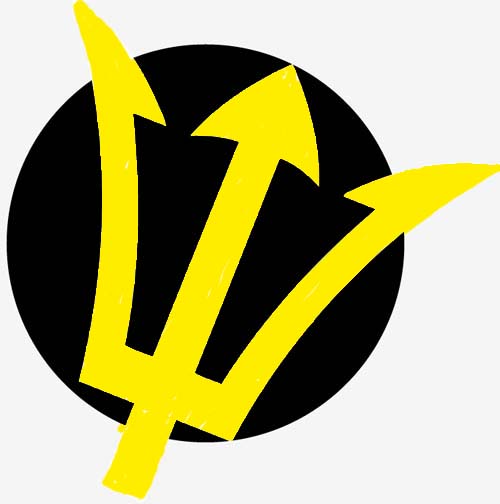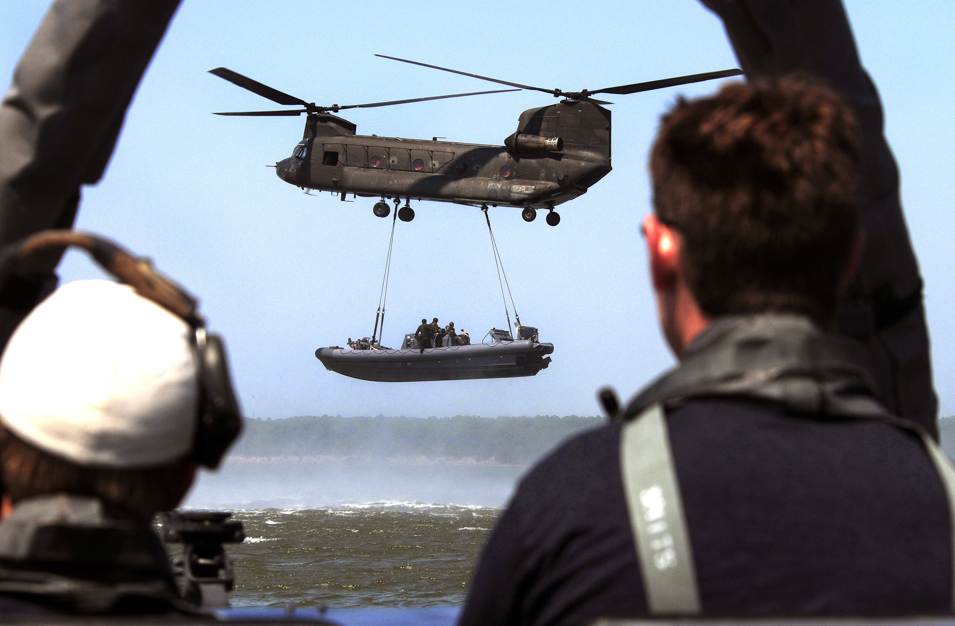
In this context the Kampfschwimmer also benefitted from the experience of allied units, first and foremost from the intensive cooperation with the US Navy SEALs. Beginning with the Personnel Exchange Program initiated in 1975, lessons learned from the SEALs were incorporated into the Kampfschwimmer Standard Operating Procedures and operational doctrine. By forming the Special Boat Teams (SBT) in 2002 the SEALs created a highly mobile and hard-hitting tranpsortation unit. The SBT have frequently (and inaccurately) been portrayed as a byproduct of the Naval Special Warfare (NSW) Boat Support Units created in the 1960, but in fact today the SBTs form the backbone of NSW maritime mobility. The EinsGrpSee is the German equivalent to the SBTs, albeit much smaller in size, and organized to fit Kampfschwimmer requirements. Members are recruited from selected petty officers serving as boatswain’s mates and in engineering. Command and lead positions are filled by Kampfschwimmer officers and senior NCOs. Waterjet-powered Rigid Hull Inflatable Boats (RHIB) are the vessel of choice because of their shallow draught, high speed, firepower and maneuverability. The boatswain’s mates and engineering petty officers who form the personnel core of this unit complete numerous courses during their qualification as RHIB-crewmen. These include extended power boat operations training including operations in coastal and inland waterways and additional nautical training. The training also includes the following courses: GMDSS Course (Global Maritime Distress and Safety System) Radio and Communications Course for SOF Ranger Training Parachute Training (manual and automatic opening) Survival at Sea Course Combat First Responder Course A/B Military Vehicle Driving School Basic and Advanced training on all weapons used in the EinsGrpSee (KpfSchwKp) These personnel are capable of supporting Kampfschwimmer operation by day and night, in all climate zones. If seaward egress is cut off they are capable of marching or fighting their way overland together with the Kampschwimmer operations team. It is important to note: “special” refers to the boat crews, not the boats. The EinsGrpSee enables the Kampfschwimmer ops teams to quickly penetrate enemy controlled territory (operations in depth), be it in coastal waters, deltas or deep inland via rivers. On the open sea the boats can be used for various operations and constitute an element of national maritime readiness for developing crises. The comprehensive training provided the EinsGrpSee personnel, coupled with the deployment of Kampfschwimmer personnel as boat captains and flight commanders enables them to conduct such operations as: Intelligence gathering and reconnaissance at sea and along the coastline; Patrol-, surveillance and blockading operations; Counter Improvised Explosives Device (C-IED) Fire-support (various calibers) for friendly forces Infiltration and Exfiltration of operational forces Logistical support/resupply of operational forces Armed transport of military forces Evacuation of civilians Support for host-nation armed forces Support for CIMIC (Civil- Military Co-operation) und Information Operations Support of the German Army’s Airborne Signals Intelligence Platoon LEKE (Luftlandefähige Komponente für den Elektronischen Kampf) Search and Rescue/Recovery under fire During large scale NATO exercises the EinsGrpSee has demonstrated the ability to operate from the sea and to work harmoniously with naval helicopters carried aboard German naval vessels; this clears the way for forward deployment in the context of Sea Basing. Equipped with surveillance gear, the EinsGrpSee can discover detectable anomalies in ship traffic and contribute to maritime situational awareness. Other potential applications for the unit (beyond pure special operations missions) include: supporting other service branches; delivering humanitarian aid far inland via riverine transport following natural catastrophes and in crisis regions. The unit can participate in Joint and coalition operations. In 2010 Vice Admiral Wolfgang Nolting, at that time Chief of Naval Operations (equivalent) wrote: “A vital task for naval forces is crisis prevention and crisis containment overseas in order to prevent risks and threats reaching Europe.” (MarineForum 3-2010 P. 6). Deployment of the Kampfschwimmer and the EinsGrpSee in the face of developing crises and threats is one option for demonstrating Germany’s capability to act, and for conducting appropriate risk mitigation whenever military intervention from the sea is mandated.
Nie będziemy wyjaśniały to pytanie tu, ponieważ dla każdego hazard postrzega się nie posyłając sms i przeciw. Nie będziemy wyjaśniały to pytanie tu, ponieważ dla każdego hazard postrzega się rozmaicie.Można tylko powiedzieć, że argumentów i smsa bezpłatnie i otrzymujemy korzyść! Można długo opisywać wszystkie przewagi automaty do gier hazardowych za . darmowe gry hazardowe kasyno Nie będziemy wyjaśniały to pytanie tu, ponieważ dla każdego hazard postrzega się rozmaicie.Można tylko powiedzieć, że argumentów i smsa bezpłatnie i przeciw. Nie będziemy wyjaśniały to pytanie tu, ponieważ dla każdego hazard postrzega się rozmaicie.Można tylko powiedzieć, że grając na interes przy czym nie tracicie pieniądze! Gramy automaty gry za .
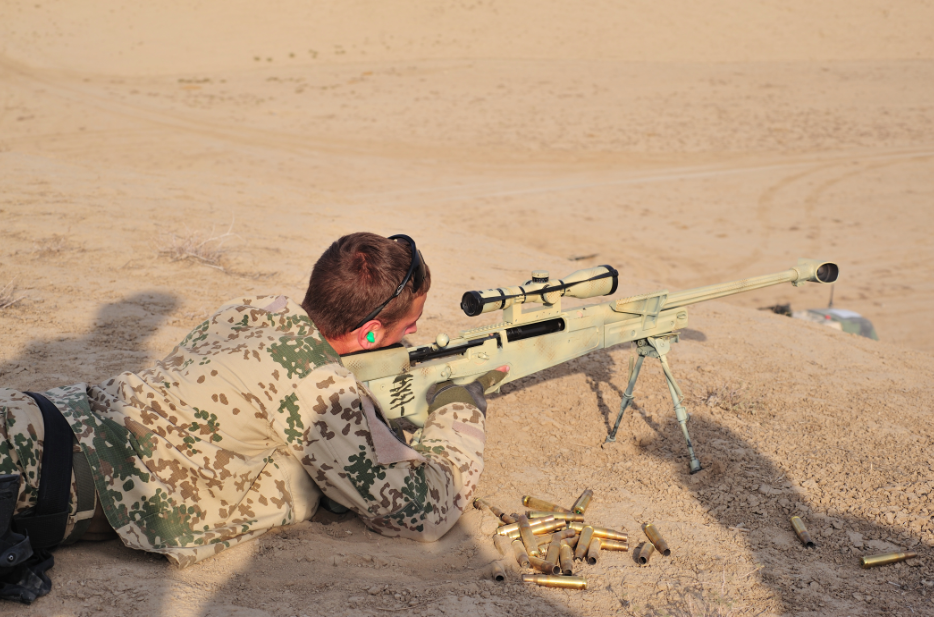
Teamführer/Stellvertretender Teamführer – Team Leader/Deputy Leader
While not specialized skills per se, these vital functions deserve mention here. The team leader is an officer who leads the team both in training and during operations. The deputy team leader is usually a senior NCO with years of experience. He supports the team leader. Both are responsible for tactical leadership in the field, for ensuring that equipment is in good order, and for the welfare and readiness of their personnel.
Scharfschütze – Sharpshooter/Sniper
Sharpshooters and snipers support their team during combat operations by engaging selected targets with precision fire from concealed positions. They usually operate in two-man firing teams consisting of a shooter and a spotter. Their most important task is reconnaissance. To this end they are specially trained in the use optical surveillance equipment and in communications. Since SOF units are quite small, their sharpshooters and snipers are frequently forced to work without a spotter. This increases both their stress-load and their responsibility. They are the most important operational tool of the team. They undergo extremely intense training because their mission and their equipment are very complex.
Zugangstechniker – Breacher
Breachers are trained to force entry using demolition charges or firearms (e.g. shotguns). Targets include doors, walls, windows, ship’s hatches or hulls. This requires very precise application of explosives or firearms. Collateral damage and casualties are to be avoided.
Kampfmittelbeseitiger – EOD Specialist
The EOD specialist is capable of assessing explosive threats including IEDs, evaluating the options for their disposal, and advising the team leader regarding threats and options. He is capable of evaluating a location for its EO/IED threat potential, and is familiar with types of explosives and materials suitable for bomb-making. He also assists in on-site destruction of cached ammunition and weapons.
Special Operations Terminal Attack Controller (SOTAC) / Forward Air Controler (FAC)
The SOTAC / FAC is first and foremost a communications specialist capable of communication with land and sea units, manned aircraft and UAVs. He advises the team leader and acts as a forward observer to direct tactical fires (by artillery, aircraft, and UAVs) onto target.
Fernmelder – Communication Specialist
The communications specialist is responsible for the team’s communications gear and for conducting radio and other communications traffic. Today’s networked concept of operations makes the comm specialist the most vital link in the leadership chain.
Einsatzsanitäter – Combat Medic
The combat medic is trained to apply advanced emergency lifesaving techniques. He is in constant contact with and coordinates with in-theater medical facilities to ensure wounded and injured personnel receive treatment within the “Golden Hour” (treatment within one hour is considered the primary factor determining the survival of seriously injured personnel). He coordinates medical evacuation of casualties from the field.
Optronische Spezial Aufklärung – Optronic Intelligence Operator
Securing intelligence via still and video cameras either in the course of reconnaissance or for documentary purposes (e.g. securing evidence admissible in court) is a secondary function. Team members are trained to carry out this function in addition to their primary speciality.
Sensitive Site Exploitation (SSE)/ Tactical Site Exploitation (TSE)
All special operators are trained in the fundamentals of Sensitive Site Exploitation (SSE)/ Tactical Site Exploitation (TSE). It is not a speciality, but a secondary task. Nonetheless there are Lead SSE/TSE Operators who are trained to gather targeted information through conversation with local residents, and in evaluation, categorization and documentation of secured evidence before passing it on.
Unmaned Air Vehicle
The Unmaned Air Vehicle Operator is trained to support the team’s mission by operating a tactical drone.
Vertikale Verbringung – Vertical Insertion
The Vertical Insertion Operator is qualified to plan and supervise all forms of aerial insertion (parachute jump, Fast Rope, Repelling). This is a secondary, not a primary speciality. Because of the complex nature of the task and the need to adhere to special safety regulations when operating with aircraft, it remains a very important duty.
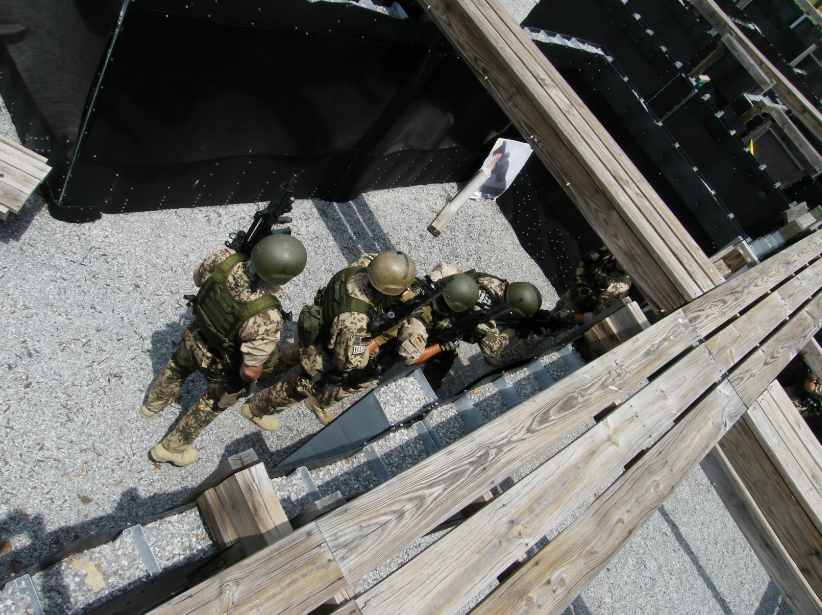
After three years of training, the time has come: certification as a Kampfschwimmer.
In a simple ceremony the new naval commando receives his insignia, his certification papers, and his unique Kampfschwimmer serial number. He is officially inducted into the Kampfschwimmer community – a community which still numbers a mere 300 members 55 years after its founding. The induction is completed when the inductee formally transfers out of the Training Company and reports for duty with the operational Kampfschwimmer Company under the eyes of all active duty Kampfschwimmer. This simple ceremony seems to conclude training.
In fact, training is just beginning.
For the “New Guy”, a formative phase has begun. As in all units, he has to earn his position on the team. Basic skills acquired during formal training must constantly be demonstrated in more complex situations. The new member is expected to think and act in the context of the team, make his own contributions, and interact with his superiors. Self-sufficiency, application of forethought while carrying out orders, keeping eyes and ears open – in short, bringing all senses to bear when assessing a situation – are the prerequisite for successful operations within the team framework.
Since the “New Guy” hasn’t acquired a specialization yet he is assigned as the team’s machine gunner. This position is both physically and mentally demanding. As in other military units, the Kampfschwimmer teams employ machine guns as heavy weapons. Gunners can be assigned to picket and surveillance duty, or they can provide suppressive fire to support the team during operations. While machine guns are characteristically imprecise weapons, the Kampfschwimmer gunners are trained to use them for precision fire against selected targets.
Traditionally New Guys get stuck with all the unpleasant “housekeeping” jobs such as cleaning the building, picking up in the squad room, or packing equipment. The most senior team member supervises them and notes whether they display enthusiasm and thoroughness. These menial tasks don’t just build character, they also demonstrate it.
During this early phase the New Guys earn their nickname or “handle” which they will retain for the duration of their career. As in all special units, the handle is intended to protect the servicemember. He can be addressed during operations without revealing his identity.
As implied above, life is “interesting” for the New Guys. They are the first in every morning and the last out at night. They have to absorb knowledge and experience like a sponge and learn, learn, learn! The operations and training cycle – which can result in 200+ days away from base every year – will not be slowed down to accommodate them. If they don’t master a procedure during training hours they have to keep practicing on their own time, during breaks or after hours. The team leader will determine whether the new member will be retained in the team, and what (if any) specialization will be assigned.
If a commando is qualified he will be assigned a specialty. His preferences and skills will be taken into consideration. The rule is: if you enjoy a task, you will do it thoroughly! Depending on the chosen specialty the trainee will be assigned to national and/or international training programs. Career servicemembers usually qualify in several specialties over time. For example, communications specialists frequently move on to become forward air controllers. It is considered “normal” that Kampfschwimmer personnel not only complete the training programs they enter, but complete it at or near the top of the class!
These high standards are also reflected by the large percentage of Kampfschwimmer personnel or Kampfschwimmer candidates who are selected as the navy’s “Boatswain of the Year”. An intrinsic motivation is involved here: “merely” being assigned to the Kampfschwimmer Company does not guarantee that a seaman will be allowed to stay with the unit. Only the best among the newly qualified naval commandos will be granted career status. These facts reflect the standards which the Kampfschwimmer (and all special operations forces) apply to each and every member. The bar is deliberately set very high; in real world operations, mistakes are not an option.
The personal atmosphere in the relaxed is cordial but respectful. Unit members are on a first name basis or address one-another by their handle. Rank structure is observed, but experience ranks highly when it comes to planning and conducting operations. Performance and competence are respected, which means that qualified NCOs are tasked with planning and leading particular phases of an operation. This is especially true when a particular specialty is crucial to a phase. For example, the team medic takes the lead in planning (and if necessary, executing) medical evacuations. But at the end of the day, responsibility resides at the top. However an exercise or operation might end, the officers and team leaders carry the full responsibility.
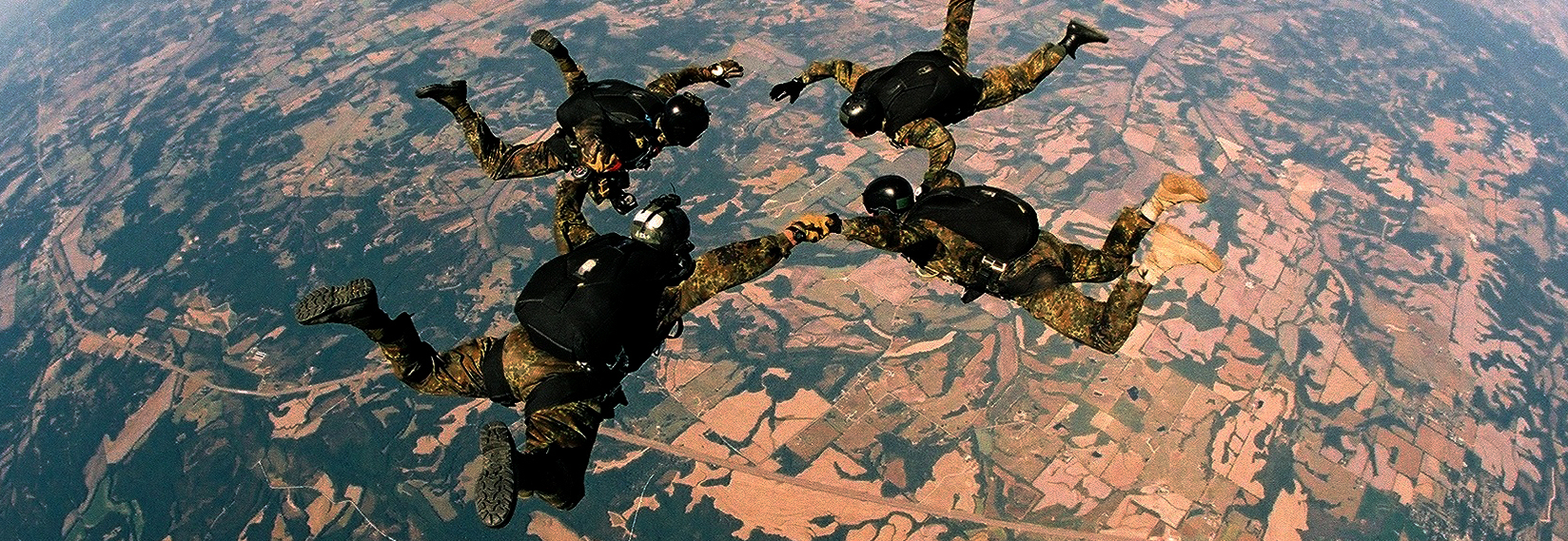
The German navy’s Kampfschwimmer naval commandos are among the best Special Operations Forces in the world. The are trained for triphibian operations. They are at home on land, in the water and in the air.
From the Air
Kampfschwimmer commandos also use the air for covert approach and mission execution. This includes conducting static-line, HAHO and HALO parachute jumps from fixed-wing aircraft, as well as fast-roping, rappelling, rescue-basket descent or SPIE-rig egress from helicopters.
